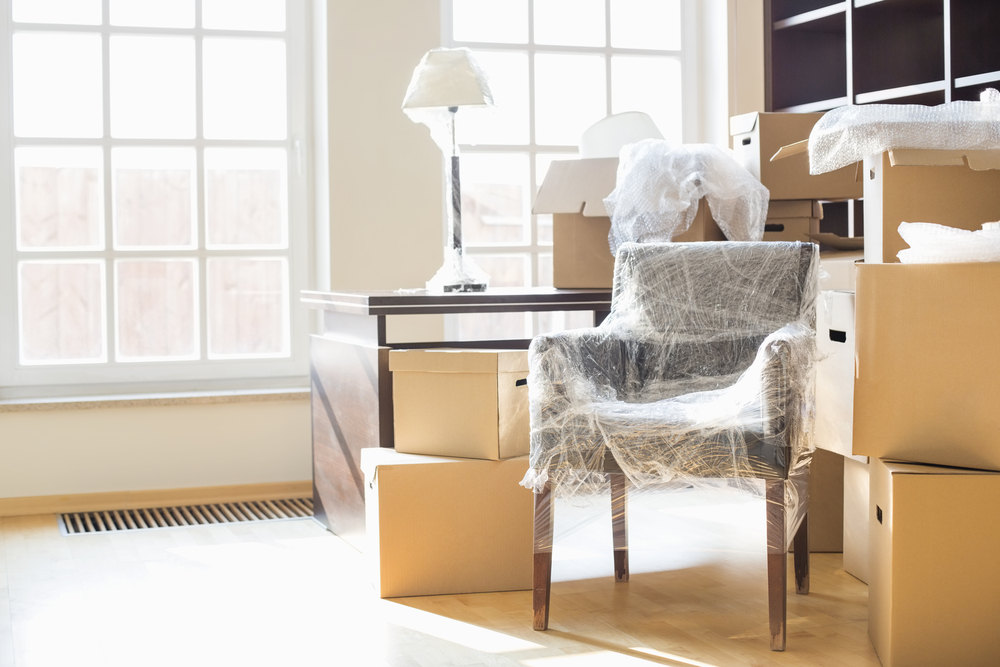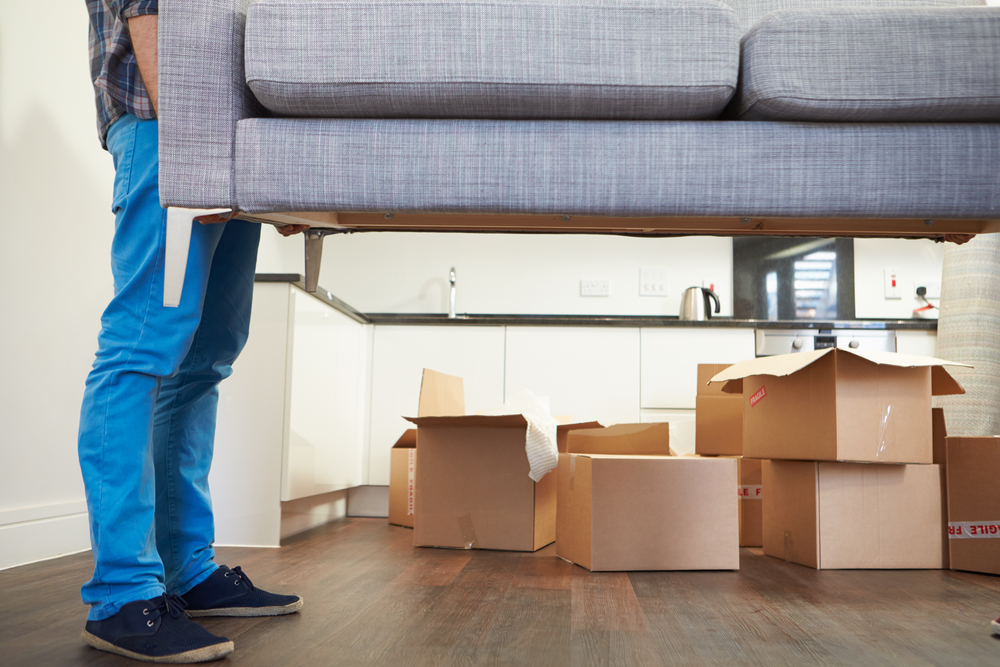
March 26, 2024
Moving Checklist: How to Pack for a Move Room-by-Room
Moving can be both exciting and stressful. While you’re likely looking forward to your next chapter, you might be worried about getting ready to embark. There are a lot of steps involved in moving, which is why a checklist can be so helpful. Here, we’ll break down the process of packing every room in your home and cleaning the space so it’s ready for the next tenant. Whether you’re moving from one New York City borough to another or you’re planning a cross-country move, these tips will make the process as smooth and stress-free as possible.
Packing the Kitchen
Packing your kitchen can be tough, since you’ll be using the space until the day you move out. But with a little preparation, you can clear out the space with minimal hassle on moving day.
First, clear out your pantry and fridge, throwing out expired items and donating any stable foods you won’t eat. In the days or weeks before your move, see if you can use up some of your pantry staples to prevent a big grocery trip. Throw out any open packages to prevent spills and messes while packing and moving.
Empty and clean your appliances before packing. Keep their cords close by, and label the boxes as fragile. You can first pack those unique appliances you may not use very often, such as bread makers or stand mixers. Appliances you use regularly, like toasters or blenders, can wait until later. If you have the original boxes, use them for easy moving.
Place bubble wrap between layers of dishes to prevent breaking during the move. You can put bubble wrap or packing paper inside glasses to keep them safe as well. Be sure to label these boxes as fragile!
If you have a cooler, you can use it to transport food from your fridge or freezer. This process also saves you from packing yet another box, and since many coolers have wheels, you can move it easily without straining to lift a heavy load.
Packing the Office
Packing your office usually involves moving lots of paperwork and documents. You may want to use this time to get rid of old receipts or other paperwork that’s not relevant or needed anymore, giving you less to pack.
Don’t pack boxes too heavily when you’re gathering your books, papers, and documents. It’s easy to overestimate how much you can carry! Small boxes will handle weight better and will be easier to transport than large boxes.
Keep all of your important documents separate and secure, and keep them in an easily accessible place throughout the moving process. You’ll have peace of mind knowing where your most critical documents are and will save yourself the hassle of replacing them if they get lost within your other belongings. Plus, you may need some of those documents for starting your utilities or changing your address when you get to your new residence.
Take photos of your electronics before disassembling them to make the rebuilding process easier. Keep any hardware in a plastic bag and place it with the device in your car or moving truck.
Packing the Bedrooms
When you start packing your bedroom, begin with out-of-season items. If you’re moving in the summer, for instance, you can pack up your winter coats and heated blankets without disturbing your everyday routine.
Keep hanging clothes on their hangers to save time when you get to your new home. You can place them into large boxes or moving containers, or use a large trash bag to keep them together. When you get to your new residence, unpacking your wardrobe will take no time at all!
Use tote bags, luggage, and suitcases to quickly pack loose clothing or small items throughout your bedroom. Valuable possessions should be placed in a secure box and kept close to you during the move. Packing jewelry? Use buttons to keep your earrings together, and prevent necklaces from tangling by threading them through drinking straws.
Place your bedding and pillows inside trash bags to keep them clean and dust-free. As far as your mattresses and other bedroom furniture, blankets and sheets are ideal for protecting them.
Packing the Bathrooms
When packing your bathroom, place your toiletries in plastic bags to prevent messes if there’s a spill. As with other rooms, you can pack infrequently used items first, such as extra toiletries and hair supplies. The items that you use every day can be packed on the day before or the day of your move.
Pack medications separately (preferably as one of the last things you pack) and clearly label their box. It may be helpful to pack your daily medications separately from other medicines, such as ibuprofen or acid reducer that you don’t take every day.
Packing the Living Room
The living room often has lots of different things to pack, from electronics and books to family photos and paintings. A bit of planning can make packing this room a breeze.
Wrap mirrors, paintings, and other fragile items in blankets or towels. You can do the same with lamp shades and chandeliers. If you have large mirrors or glass-framed pictures, use masking tape to create an “X” shape. In the case of damage, the tape will minimize spilled glass and reduce your risk of injury.
Pack irreplaceable photos and videos separately from other items and keep them with you during the move (instead of loading them onto the truck). If they’re left in the heat, they could become warped.

Move-Out Cleaning Tips
Once all of your belongings are packed away, you’re not quite ready to say goodbye to your old residence. You’ll need to do a bit of cleaning before you leave, whether you’re looking to get your apartment’s deposit back or simply leave a clean home for its new tenants.
You’ve probably hung things on your walls, meaning you’ve likely used nails. Go through each room and remove any nails in your walls. Patch the holes left behind to give the next tenants a clean slate to hang their own pictures and decorations.
You’ll probably already plan to cover the basics like sweeping, mopping, and vacuuming. Don’t forget to dust those forgotten areas like ceiling fans, door frames, and the tops of cabinets. It’s also nice to use disinfectant wipes to clean drawers and cabinet shelves.
Deep clean the bathrooms, including grout and drains, and clean appliances inside and out. These areas tend to be neglected upon move-out, but leaving them clean for the next tenant is not only polite but also a good way to make sure you get your deposit back!
Use a wet rag or duster to tackle baseboards and trim. This step doesn’t take long but does go a long way in terms of overall cleanliness. Take a few minutes to clean doors, door frames, window sills, and light fixtures as well.
Working with White Glove Cleaner
Move-out cleaning is necessary, but it can be tedious and exhausting. If you’d rather focus on preparing for your new home, White Glove Cleaner can help you finish up in your old space. We are proud to be one of the most trusted cleaning companies in New York, serving residents and businesses of all five boroughs.
Our move-in and move-out cleaning service in NYC is one of our most popular offerings. Your only task is to let us in or provide us with entry instructions, and we’ll take care of the rest. Our team will clean your space from top to bottom, leaving it sparkling clean and ready for the next tenant. If you’re moving into a new space, we can clean it before you arrive, providing you with a fresh start for your next chapter.
Once you get settled, we can continue serving you. White Glove Cleaner provides weekly, biweekly, or monthly cleaning services to help you keep your space neat and tidy no matter what. All of our team members are individually vetted and background checked, meaning you’ll only be working with the most responsible and trustworthy cleaners. We provide our own cleaning products and equipment, so you don’t have to face those added expenses. Moving should be an exciting time, not a stressful one. Let White Glove Cleaner help you clean your space so you can prepare for moving day with more peace of mind. Contact us today to learn more about all of our services.
